Title : The promise of nanotechnology in Personalized & Precision Pulmonology (PPP): Lung bioengineering and clinical translation in clinical translation of PPP guided practice
Abstract:
Despite breakthroughs in designed-driven research that have led to an increased understand-ing of PPM-based disease the translation of discoveries into therapies for pulmonary pa-tients and pre-illness persons-at-risk has not kept pace with medical need. Biodesigners, bio-technologists and biomanufacturers are beginning to realize the promise of PPM, translating to direct benefit to patients or persons-at-risk.
While there have been various therapies attempted to reconstruct the lung and segmental trachea, such as transplantation, direct anastomosis, suboptimal laser treatment, stenting, autografting and allografting none have provided an ultimate solution. Though achieving lung regeneration in controlled environments is still an ambition ongoing studies are concentrating on notable progress in the field of lung tissue engineering and methods for re-pairing lung damage including exosome carry bioscaffolds and stem cells to repair lung tissue and improve lung function in cases of damage. As well as ex vivo lung perfusion (EVLP) for rejuvenating donor lungs and the healing properties of exosomes in supporting lung regeneration.
Various tissue engineering techniques have emerged as a promising strategy to develop functional, biomimetic constructs that avoid the need for long-term transplantation or im-munosuppression. In this context the development of bioartificial lung grafts using individualized patientderived cells or 3D-bioprinting that have shown promise in mimicking intricate tissue structures might serve as alternative treatment modalities. Both biologically derived and manufactured scaffolds seeded with cells and grown ex vivo have been explored in pre-clinical studies with the eventual goal of generating functional pulmonary tissue for transplantation. Concomitantly there have been exciting efforts in designing bioreactors that allow for appropriate cell seeding and development of functional lung tissue over time. However, challenges include developing appropriate scaffold materials, advanced culture strategies for lung-specific multiple cell populations and fully matured constructs to ensure increased transplant lifetime following implantation. The development of physiologically-relevant artificial tissue models for testing novel therapies represents an important step to-ward finding a definite clinical solution for different chronic respiratory diseases.
One of the greatest barriers to the generation of an ideal bioengineered lung is surely the complexity and unique architecture of the organ itself. Without knowing and understanding the precise control and direct angiogenesis of creating intricate pulmonary vasculature, de-velopment in lung tissue engineering could not be able to move forward and to translate pre-clinical studies to clinical practice.
In this context, biodesign has created an impact globally in the ecology by preventing the ecological imbalance, creating an impact on the psychological behaviour of humans by boosting their confidence and thus influencing one’s behaviour. Biodesign is a powerful tool to cater the current problems associated with the environment, healthcare, wildlife, bioar-chitecture and surgical procedures. The use of biodesign in designing artificial pulmonary organs and segments has increased to by extending its arms to the different fields associated with the daily life of humans.
Both PPM and nanobiotechnologies are new to medical practice which are being integrated into diagnostic and therapeutic tools to manage an array of medical conditions in pulmonary practice.
Nanobiotechnology and nanoscience can provide innovative techniques to deliver drugs targeted to the site of inflamed lungs. For instance, nanoparticles and nanocarriers have been developed to overcome the limitations of free therapeutics and navigate biological barriers - systemic, microenvironmental and cellular - that are heterogeneous across pulmonary pa-tient populations and diseases. Overcoming this patient heterogeneity has also been accom-plished through precision and nanodrug-based therapeutics, in which personalized interven-tions have enhanced therapeutic efficacy. For instance, nanoparticles designed to release antibiotics deep inside the lungs reduced inflammation and improved lung function in mice with symptoms of chronic obstructive pulmonary disease.
Some of the widely used nano-carriers for the treatment of chronic pulmonary diseases, via pulmonary route are as fol-lows: Polymeric nanoparticles, liposomal nano-carriers, solid lipid nanoparticles and submi-cron emulsions. Nanocarrier systems provide the advantage of sustained drug release in the lung tissue resulting in reduced dosing frequency and improved patient compliance. The re-cent cutting-edge approaches such as nanoparticle-mediated combination therapies, novel double-targeted nondrug delivery system for targeting, stimuli-responsive nanoparticles and theranostic imaging in the diagnosis and treatment of pulmonary diseases are becoming highly promising! Further development of nano-sized carriers including nanoparticles or lip-osomes holds great potential for diagnosis and advanced delivery systems for immunomodu-lation in respiratory diseases; however, translational studies are urgently needed to validate the use of nanotechnology for clinical applications.
Advancements in nanobiomedicine have played a crucial role in driving the PPM-guided rev-olution and PPP-related practice. With the ability to engineer and manipulate materials at the nanoscale, biodesigners have been able to develop innovative solutions for diagnostics, drug delivery and imaging as applicable to pulmonary and lung cancer practice. The Grand Change and Challenge to secure our Health and Wellness are rooted not in Medicine and not even in Science! Just imagine WHERE?! In the upgraded Hi-Tech Culture!



